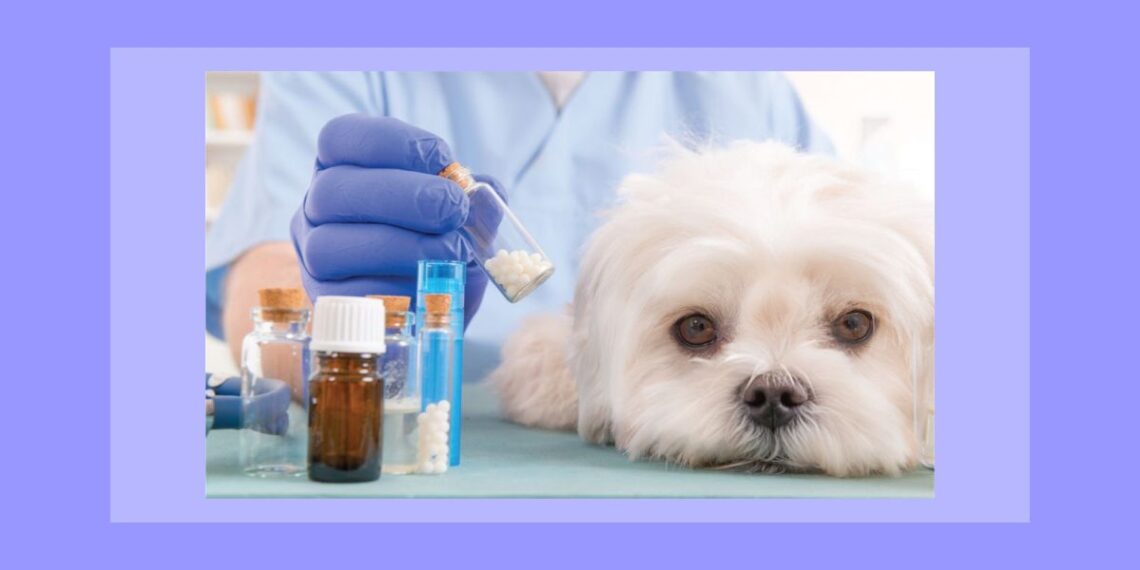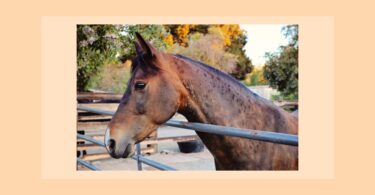REMEDY ADMINISTRATION
A small amount of any of the dosage forms (different pellet sizes or alcoholic dilutions) should be placed in the mouth. The quantity does not matter, as there are no molecules if the potency is above 12c. Even below 12c, the dilution is great enough to not worry about toxicity.
My preference is to pour 5 to 20 of the #10 granules in a folded piece of paper, or syringe cap, and pour into the front of the animal’s mouth to dissolve on the tongue and gums. If some comes out it does not matter. Remedies are energy based, so the effects are regardless of quantity. Size of the animal does not matter a shrew and a rhino need the same amount “some” dissolved in the mouth.
The larger sizes need to be crushed before pouring into the front of the mouth. I recommend cutting off the corner of an old envelope (for recycling purposes), crushing and then pouring into the mouth.
Some prefer to give liquid (20% or 40% alcohol) doses. Again, the quantity does not matter – a few drops to several dropperfuls will do.
Remedies can be given in water and milk (the pellets are milk sugar). If you are giving a remedy and waiting 1 month to re-evaluate the chronic condition, it is best to give carefully. If you will be repeating several times a day, it can even be given in food. Many feral cats have been helped when remedies were given in their food.
Warning: Many homeopathic books give quantity, frequency and potency for the condition, the disease and the symptom, size of the animal or the remedy. This is incorrect. As stated before, the amount does not matter and the frequency is dictated by your evaluation. Because people expect to be told a quantity, it is fine to tell them a specific amount to give, but also educate them that it is not important.
EVALUATING THE EFFECTIVENESS OF TREATMENT
There are three main responses to giving a homeopathic remedy, or any type of treatment. Nothing, of course, may happen.
Cure – The current symptoms, no matter how long they have been there, go away and stay away forever. The animal is healthy in most of the ways we measure health (see appendix for health signs). The animal’s vital force is healthy enough to respond to viruses, etc and get sick occasionally.
Palliation – The symptoms go away too fast for the degree of pathology and the animal does not have an improvement of overall health.. Then they return, unchanged, or slightly worse. Treatments have to be continued or at least repeated at frequent intervals. Over time the animal becomes less healthy.
Suppression – The symptoms go away too fast for the degree of pathology, and the animal gets sick on a deeper lever (mentals, internal organs, and cancer).
If you realize you have palliation or suppression – find a better remedy, refer to an experienced homeopath, use a different holistic modality or switch to conventional treatment.
When treating minor and more acute problems, you want the current symptoms to resolve and the animal to feel better overall. You may not have enough information to assess cure, palliation or suppression.
TREATMENT OF ACUTE PROBLEMS
To recap, once you have remedies and reference books in your clinic, decide what problems you want to begin treating. List all the symptoms, especially unusual ones and any possible causes of the current problem. Use the books and the following notes to select the closest matching remedy. Use the urgency of the condition and overall health of the animal to select the potency of the remedy. Give the remedy and schedule an appointment to evaluate the result (could be in 10 minutes or a day or 2, or longer).
The following list a few of the remedies you might use for acute problems. Remember that each case still needs to be individualized, so learn to distinguish each remedy by reading the materia medicas for people or animals or the therapeutic books for animals mentioned previously.
Frequency for giving homeopathic remedies in acute problems depends on the potencies you have available and the severity of the injury.
1. If life threatening, or very severe and the potency you have is
a. 3x to 30x or 3c to 12c give the indicated remedy every 5 to 10 minutes until there is a response or for 4 doses.
b. 30c, 200x, 200c or higher, give every 15 minutes for 2 doses.
2. If no change at all, re evaluate your choice of remedy. If slight improvement, repeat again and re-evaluate.
3. If the condition of the animal is less critical, give the remedies less frequently.
The following remedies can all be found in either the Acute or Chronic Animal Kit available from 1-800-Homeopathy.
Abscesses:
1. Painless abscesses, especially ones that have been draining already, or ones that are not healing or are recurring. The patient is usually chilly (wants to be warm), nice to shy or timid, and may be more thirsty than usual: SILICA
2. Very painful abscesses, often not draining, irritable, nasty and maybe has always had a tendency to be that way, & is very, very chilly, especially when sick: HEPAR SULPHUR
3. Ulcerating, smelly, discharging abscesses, painful, tendency to lots of saliva, gum problems, red gums, bad odor to breath, slightly aggressive to angry, sensitive to both heat and cold: MERCURIUS VIVUS (SOL)
Anesthesia recovery problems & post-op:
1. Not awakening as fast as you think they should, especially if they tend to bleed easily, are
sensitive to loud noises and were nervous pre-op or historically: PHOSPHORUS
2. Slow awakening and body feels cold to the touch, gums blue: CARBO VEGETABALIS
3. Weakness, ennui, lethargy, anger, just not themselves post op – STAPHYSAGRIA
4. Sore, painful, do not want to be touched, bruising – ARNICA
Bleeding:
1. Oozing, passive hemorrhage: ARNICA
2. Bright red from superficial vessels.: ACONITE, PHOS
3. Profuse, gushing, bright red: IPECAC
Diarrhea:
1. Restless, thirsty, fearful, chilly animals that have been “poisoned” by what they ate: ARSENICUM ALBUM.
2. Nice animals who are either hiding or nasty when sick, who have been “overeating” or getting into the garbage: NUX VOMICA.
3. More chronic, often very smelly stools along with other smelly problems (ears, skin), in calm
laid-back animals who prefer coolness: SULPHUR.
4. Very friendly, thirsty, slightly chilly, startles easily, blood in the stool or history of bleeding problems: PHOSPHORUS
Fear, terror or shock:
When animals come into your waiting room petrified. Stray cats who won’t come out of the bushes and seem terrified, not just street smart. Never well since that horribly loud thunderstorm. Anxious and agitated about any physical condition (cystitis cat with frequency and fear of everything). Injured animals who are in shock, or just dilated pupils and acting scared. Terror of going into the ring, especially suddenly fearful. Try ACONITE. Could be given 30 minutes before coming to clinic. After several visits they may not need it. If they are no better, dig deeper into the case.
Hernias:
Inguinal or umbilical hernias when not much else is happening: NUX VOMICA (friendly animals who seem hyper or driven, feel worse in the AM and are sensitive to noise & cold) or SULPHUR (more calm, hot, easy-going, may be smelly and thirsty). Give 30c and wait a week or 200c and wait 2 weeks. If slightly smaller, have the owner repeat when there has been no change in size in 3 days (measure it). If it improves, but not completely, you need a higher potency (200c or 1M), or a different remedy. I have seen and know of total resolution in dogs, pigs and cats.
IVD:
1. If dog is irritable & nasty, especially when normally friendly, is chilly now, has a history of
unusual reactions to drugs: NUX VOMICA
2. If very sensitive to touch on the back, or acts as if there are shooting pains: HYPERICUM.
A remedy can be given when you think there is a very early disc and you are recommending rest and not drugs or surgery. They sometimes cure even once the dog is completely paralyzed, so would be an alternative to euthanasia when the owners cannot afford surgery. .
Lyme disease:
LEDUM works in many cases of joint stiffness and fever and lethargy with no need for antibiotics.
Reverse sneezing:
This can be a sequela to rabies vaccine, so you could try LACHESIS or LYSSIN (warning: do not repeat either of these remedies more than twice unless there has been a good response.)
1. If the dog has (or has had in the past) thickened, blackened skin, aversion to wearing a collar, is talkative, and a preference for the cold: LACHESIS
2. If the dog has a fear of bright objects, desire to roam, allergic skin problems of many types, is sensitive to stimuli: LYSSIN
Status epilepticus:
1. ACONITE or BELLADONA. Aconite has more fear and anxiety. Belladonna has heat, flushing, and violence. Give a 200c or 1M of the one that fit the closest and wait 5 minutes. If there is no improvement, give the other, and wait 5 minutes. If no improvement, use whatever you would normally give.
2. Always give the flower essences for emergencies such as seizures: Bach’s rescue remedy, Green Hope Farm’s Emergency Trauma Solution, or others. These can be put directly in the mouth or rubbed or sprayed on the face, neck or legs. Also have the human take it.
Stiffness:
1. Whatever the etiology, when animals are very stiff when they first get up, then improve as they move around and loosen up (The “rusty gate” remedy, it is very similar to many of these older, stiff, cats and dogs.): RHUS TOXICODENDREN.
2. When an animal can not or will not move because the pain is worse from motion, and maybe they are thirstier than before, especially if the animal is grumpy and avoiding company: BRYONIA.
Upper respiratory infections in cats:
(These common symptoms are easily curable when acute and very hard to cure when chronic.) This would be a good “homeopathic disease” with which to begin prescribing.
1. Bland, often creamy discharges, sweet, timid, thirstless and craves open air and coolness: PULSATILLA
2. Excoriating, acrid discharges, a strong craving for heat, and fearful: ARSENICUM ALBUM.
3. Intolerance of both heat and cold, bad odors of breath and body, diarrhea and increased salivation: MERCURIUS VIV (SOL)
Trauma with aversion to being touched:
Bruising, extravasations, blunt injuries of any kind, especially when the animal does not want to be touched, maybe does not even want you or the owner to come near them at all. This would be good for the post operative patient who was not recovering their mobility, or walked very wide legged after abdominal procedures, or suddenly did not want petting and cuddling. Some practitioners use it routinely pre and post op. ARNICA MONTANA
Vaccinosis:
This is the name for any kind of an ailment that appears to result from the animal’s reaction to vaccines. Symptoms that may indicate this are: not very affectionate personality, anxiety, eyes that tear or have clinkers, bladder problems, dull dry hair coat with excess shedding, otitis and many more symptoms you will learn as you further study homeopathy and holistic medicine.
If the specific remedy for the ailment is not clear, give a dose of Thuja 30c and wait a week or 2.
If there are fears of water and aggression and anger, try one dose only of Lyssin 30c.





Clear, accurate (by my experience) and concise, good writing!
You say that “quantity” does not matter. That’s simply not true. Sensitive individuals may need a split dose, and that’s why Hahnemann went on to recommend aqueous dosing, and then LM’s, to lessen the chances of an aggravation. Thus we have perhaps 1 drop in 1/2C of water, and take 1 tsp. If there’s an aggravation, the dose can be lessened to 1/2 tsp, or 1/4 tsp; or perhaps take 1 drop of the original solution and put it in 1/2 C of water.
I believe based on my experience that it is not the quantity but the frequency which matters. I cant dare to question Hahnemann`s practice but may be your interpretation is different than what he thought.
Nasir I Chaudhri
Karachi.